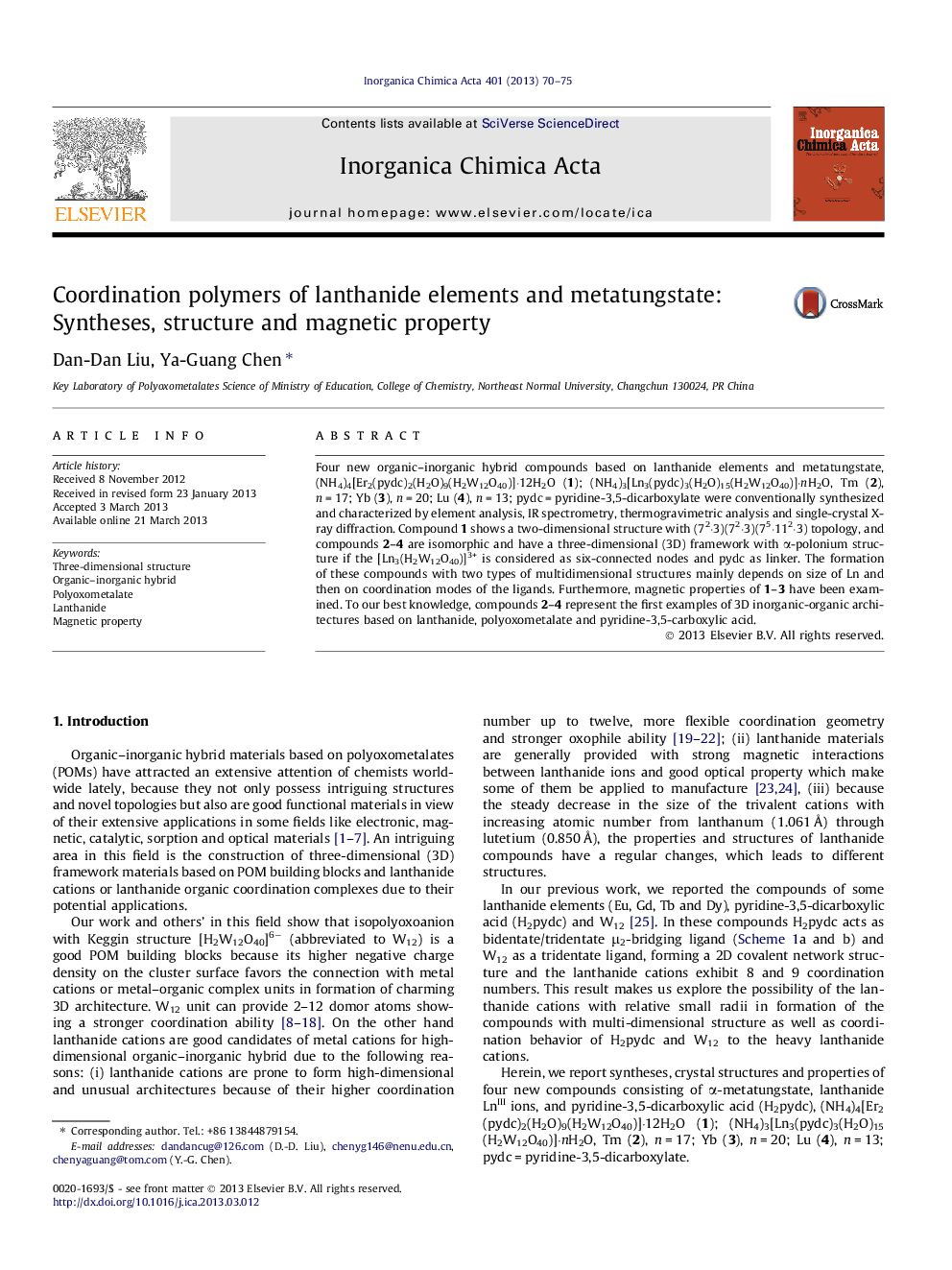| Article ID | Journal | Published Year | Pages | File Type |
|---|---|---|---|---|
| 1310421 | Inorganica Chimica Acta | 2013 | 6 Pages |
•Four new 2-D/3-D compounds of [H2W12O40]6− and Ln complexes have been synthesized.•The radii of Ln ions and coordination modes of pdc lead to different structures.•The various temperature magnetic properties of the compounds have been investigated.•Compounds 1–4 exhibited a very different thermal decomposition behavior.
Four new organic–inorganic hybrid compounds based on lanthanide elements and metatungstate, (NH4)4[Er2(pydc)2(H2O)9(H2W12O40)]·12H2O (1); (NH4)3[Ln3(pydc)3(H2O)15(H2W12O40)]·nH2O, Tm (2), n = 17; Yb (3), n = 20; Lu (4), n = 13; pydc = pyridine-3,5-dicarboxylate were conventionally synthesized and characterized by element analysis, IR spectrometry, thermogravimetric analysis and single-crystal X-ray diffraction. Compound 1 shows a two-dimensional structure with (72·3)(72·3)(75·112·3) topology, and compounds 2–4 are isomorphic and have a three-dimensional (3D) framework with α-polonium structure if the [Ln3(H2W12O40)]3+ is considered as six-connected nodes and pydc as linker. The formation of these compounds with two types of multidimensional structures mainly depends on size of Ln and then on coordination modes of the ligands. Furthermore, magnetic properties of 1–3 have been examined. To our best knowledge, compounds 2–4 represent the first examples of 3D inorganic-organicarchitectures based on lanthanide, polyoxometalate and pyridine-3,5-carboxylic acid.
Graphical abstractFour Ln-pyridine-3,5-dicarboxylate and α-metatungstate compounds exhibit two- and three-dimensional structures due to decrease in the radii of the lanthanide ions and the different coordination patterns of ligands.Figure optionsDownload full-size imageDownload as PowerPoint slide
